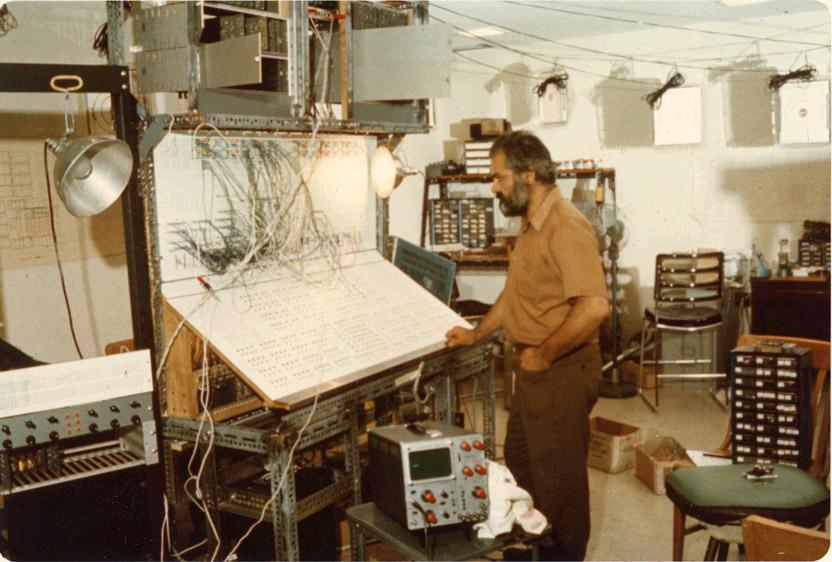62 years later, electronic music still created at University
Feb 10, 2017
The Illiac Suite was the first substantial musical composition made through a computer program. It was generated in 1956 by Lejaren Hiller and Leonard Isaacson, University professors in chemistry.
Using the ILLIAC 1, which was the first pioneering computer, built by the University in 1952, they developed the code for the first computer-assisted algorithmic musical composition for string quartet.
They were able to translate the output into musical notation, which would then be performed by traditional instruments.
The premier performance of the Illiac Suite occurred on the University campus on Aug. 9, 1956 by School of Music students.
“This forever changed how people worldwide thought about music and its relationship to science,” said Scott Wyatt, professor emeritus of composition-theory, who served as the director of the University’s Experimental Music Studios for 39 years.
Get The Daily Illini in your inbox!
Wyatt said that he knew Hiller personally and met with him several times after Hiller left the University.
“(The composition) initiated widespread interest and development of the use of computers for music and art, computer music, electronic music and music technology,” Wyatt said in an email.
Hiller’s interest in music began at an early age. He took oboe lessons growing up and wrote an orchestra piece when he was sixteen, Wyatt said.
His musical interests only progressed as he matured, studying music composition and music theory with renowned Princeton University composer Milton Babbitt before attaining his Ph.D. in chemistry from Princeton University in 1947.
Hiller joined the chemistry faculty at the University in 1952, while simultaneously working on a Masters degree in music composition at the School of Music.
“Hiller was a scientist with a love of and fascination for music,” Wyatt said. “He spent hours analyzing the creative and compositional musical processes.”
Hiller joined the faculty of the School of Music in 1958. That year, he founded the second electronic music studio in the country at the School of Music —The first was founded at Columbia University.
The studio became known as the University of Illinois Experimental Music Studios (EMS).
Hiller taught one of the first courses on electronic music in the country, according to an essay entitled “Lejaren Hiller: Early Experiments in Computer and Electronic Music” written by James Bohn in the book: No Boundaries, University of Illinois Vignettes.
“The avant-garde nature of the course was disguised by its title, the ‘Seminar in Musical Acoustics,’” Bohn wrote.
EMS remains an active and productive center for electroacoustic and computer music composition, education and research, Wyatt said.
As a result of the EMS, students and faculty working in the School of Music have been responsible for many of the developments in electroacoustic music over the years.
The first developments in computer sound synthesis by Lejaren Hiller, the expanded gestural computer synthesis by Herbert Brün and the Harmonic Tone Generator by James Beauchamp are just a few of the many creations the School of Music has been accredited with.
Under the direction of Miller, Beauchamp invented the Harmonic Tone Generator, one of the first additive electronic voltage-controlled synthesizers.
“You can build any arbitrary sound quality within the six harmonics by just changing its knobs,” said Beauchamp.
The original Harmonic Tone Generator, as well as the Harmonic Tone Generator 2, are both located inside the Sousa Archives and Center for American Music inside the Harding Band Building.
FOR PRINT ONLY – DELETE AFTER PUBLICATION
Check out this article online to listen to the Illiac Suite for String Quartet






